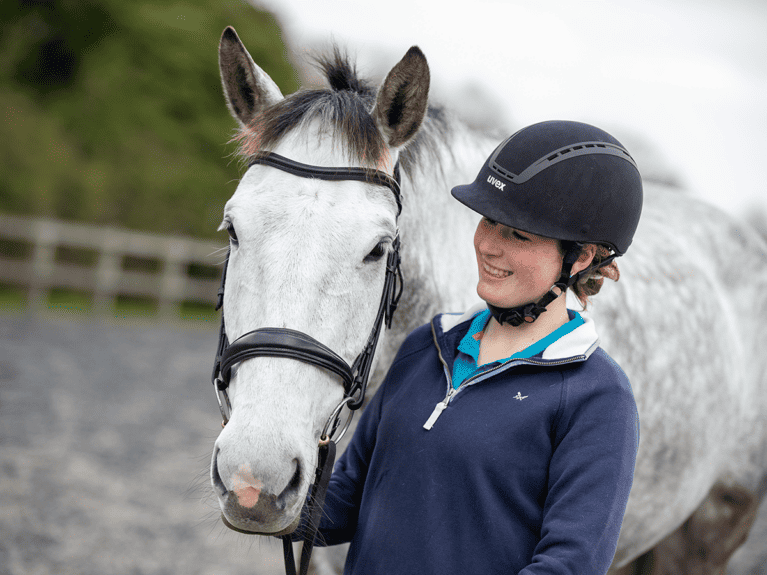Is your horse wearing the right noseband? We look at the different types that are out there to help you decide.

Since acquiring your horse, have you ever tried different nosebands to see what works best for him or have you simply stuck with the one he came with? Quite often, owners will continue to use what the horse had when they bought him or what he was ridden in before. There’s nothing wrong with that but sometimes a little research could lead you to a noseband better suited to your horse or, alternatively, confirm you’re using the right one. If you’re ever unsure what’s right for your horse, always consult an expert.
Cavesson – This is one of the most basic nosebands and is quite commonly seen. The cavesson was created for its aesthetics rather than for practical use and it sits relatively high on the horse’s face.
Flash noseband – A flash noseband is a leather attachment added to a cavesson noseband and it runs under the jaw, sitting in the groove. The flash strap, when fitted correctly, helps prevent the horse from opening his mouth and keeps him more constant in the contact.
Grackle – The grackle forms a cross across the top of the nose and is most effective on a horse who crosses his jaw to avoid the contact, as it prevents him from doing this. The grackle also has different pressure points around the horse’s face.
Drop – This sits much lower on the horse’s face than a cavesson and pressure is applied on the low part of the nose. It has a similar action to the flash by helping to keep the horse’s mouth closed but it also helps prevent him from crossing his jaw, too.
Sheepskin noseband – This is a cavesson covered in sheepskin and can be useful to prevent rubbing on a horse with a sensitive nose. However, as it partially blocks vision ahead, it’s usually used to help lower a naturally high head carriage and encourage the horse to look ahead and down. It’s commonly used for jumping and galloping work.
Hackamore – This noseband is used with a bitless bridle. There are a few variations but English and German are the most common types. Hackamores are used on horses who have very sensitive mouths and they work by applying pressure to the horse’s face and jaw instead of using a bit in the mouth.
Did you know?
If you don’t need a noseband to serve a specific function, it’s perfectly possible to use a bridle without one. This is quite commonly seen in western riding, for example, and is sometimes favoured by endurance riders. In fact, there is even an argument proposed by some for riding without a noseband to allow the horse to have full movement in his mouth as a way of encouraging relaxation and acceptance of the bit.















